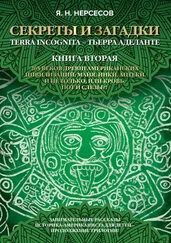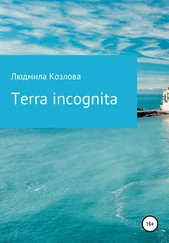The Lisbon earthquake and the series of disasters that followed it also had an impact on the emotional range of responses to such cataclysms. From that point on, descriptions of the destruction they wrought and their scientific study went hand in hand with the expression of a feeling of pity and compassion for those affected. There was also sometimes an urge to aestheticize the tragedy – a point I will return to later. A new fear took over from the fear of divine wrath: the potential collapse of civilization. This feeling is still with us today.
We now turn to the cognitive and emotional consequences of the Lisbon earthquake. It was long argued that Voltaire’s poem about the disaster set out to radically challenge God’s goodness and the optimistic philosophy of Leibniz’s Theodicy . This is true as far as it goes, but requires further explanation. Unlike d’Holbach, Voltaire did not wholly exclude God from his reflections and his denunciation. He doubtless thought society was not yet ready for a fully secular response to natural disasters. Diderot was more outspoken in his opinion that it was ‘the movement inherent in matter, not the will of God that transforms the world’; 13Jean-Jacques Rousseau held that natural disasters such as volcanic eruptions, major earthquakes and terrible fires caused by lightning were the cause of the social state, since they brought men together in large numbers to repair the damage. More immediately relevant for a history of ignorance are the gaps in knowledge filled by the Lisbon earthquake, which revived libido sciendi , the thirst for knowledge. In this context, the disaster proved a turning point. As well as the printed press, handwritten communications in the form of letters and even handcopied gazettes played a significant role. Later sources documented the importance of oral memory in handing details of the Lisbon earthquake all the way down to the late nineteenth century. Grégory Quenet has argued that the event ‘led to an unprecedented unification of Europe, perhaps unrivalled until the French Revolution’. 14The Lisbon earthquake long remained the archetypal deadly disaster in the European imaginary, almost completely supplanting the Lima earthquake of 1751.
I have chosen to take the Lisbon disaster as a key date marking a turning point in the history of contemporary representations of the earth. Between 1755 and the opening decades of the nineteenth century, a series of questions and issues were hotly debated, demonstrating gaps in contemporary knowledge, the first hesitant steps towards filling them in, and a lack of clarity in how even the most cultivated thinkers pictured the earth and sought to understand its secrets.
It is worth briefly stating the main issues explored as part of this wide-ranging debate, which varied across the social spectrum:
1 How old is the earth? How best to understand the timescales of its history?
2 What is inside the earth? Fire, water or viscous matter? This question gave rise to theories on earthquakes: when these became fashionable, the same process was extended to volcanoes, with various interpretations put forward to explain the magnificent spectacle.
3 A series of questions focused on the poles, which lay beyond human reach at that point. Did they have inner Arctic and Antarctic seas? Where did sea ice come from?
4 Before the first mountaineering expeditions, how did people think geological strata and mountains were formed?
5 What did they think about glaciers and mountain topography?
6 What was the meaning of the first major fossil discoveries, for instance in Siberia?
7 In an age when men were fascinated by storms and hurricanes, how did such weather phenomena form and grow so violent? (This was a time when remote regions were only just beginning to come into focus, leading to a new interpretation of space – a point I will return to later.)
When studying the history of ignorance, it is crucial to foreground the lack of certainties and the sheer scale of the gaps in common knowledge. Even the most erudite of scholars asking profound questions had barely more information at their fingertips than those content to leave the questions unasked. Since Aristotle’s theories had been discredited, undermining the solid core of certainties that had satisfied libido sciendi for centuries, Enlightenment scholars were asking many new questions. However, as we will see, very few gaps in knowledge about the earth were actually filled with any certainty. Diderot and d’Alembert’s Encyclopédie [ Encyclopedia ] and similar works of Enlightenment scholarship offer the reader an inventory of uncertainties and lacunae waiting to be filled.
1 1. These opening paragraphs were inspired by Thomas Labbé’s recent major work of scholarship, Les Catastrophes naturelles au Moyen Âge. Paris: CNRS, 2017, pp. 185, 188.
2 2. Petrarch, Letters on Familiar Matters, vol. 1, tr. Aldo S. Bernardo. New York: Italica, 2005, p. 245.
3 3. Jean Delumeau, La Peur en Occident, XIVe–XVIIIe siècle: Une cité assiégée. Paris: Fayard, 1978.
4 4. Labbé, Les Catastrophes naturelles, pp. 294–5.
5 5. The importance of signs of catastrophe is highlighted by Thomas Labbé and by Philippe Bénéton, whose study of Niccolò Massimo (Niccolò Massimo: Essai sur l’art d’écrire de Machiavel. Paris: Cerf, 2018) focuses at length on the importance of disasters as signs in Machiavelli’s Florence (ibid., pp. 66–7), quoting a chapter from his Florentine Histories (VI-34) mentioning a terrifying tornado in 1456.
6 6. Henri Brémond, Histoire littéraire du sentiment religieux en France [1916–1932]. Paris: Armand Colin, 1969. We will return to natural theology throughout the present book.
7 7. Translator’s note: the word ‘catastrophe’ had been used in the modern sense in English since the 1530s.
8 8. The following pages draw on two books crucial to our understanding of the disaster: Grégory Quenet, Les Tremblements de terre aux XVIIe et XVIIIe siècles: La naissance d’un risque. Seyssel: Champ Vallon, 2005; and Anne-Marie Mercier-Faivre and Chantal Thomas (eds.), L’Invention de la catastrophe au XVIIIe siècle: Du châtiment divin au désastre naturel. Geneva: Droz, 2008.
9 9. Mercier-Faivre and Thomas, L’Invention de la catastrophe au XVIIIe siècle, p. 8.
10 10. Quenet, Les Tremblements de terre aux XVIIe et XVIIIe siècles, p. 358.
11 11. On how information about the disaster spread, see Anna Saada, ‘Le désir d’informer: le tremblement de terre de Lisbonne’, in Mercier-Faivre and Thomas, L’Invention de la catastrophe au XVIIIe siècle, pp. 209–30.
12 12. Quenet, Les Tremblements de terre aux XVIIe et XVIIIe siècles, p. 367.
13 13. Muriel Brot, ‘La vision matérialiste de Diderot’, in Mercier-Faivre and Thomas, L’Invention de la catastrophe au XVIIIe siècle, pp. 75–91.
14 14. Quenet, Les Tremblements de terre aux XVIIe et XVIIIe siècles, p. 348.
Some thirty years ago, I imagined two individuals sitting on the seashore, contemplating the rocks at their feet. 1One thought he was looking at the remains of Noah’s Flood; the other, his contemporary, with some knowledge of the new theories on the age and internal structure of the earth, was studying what he saw as the result of hundreds of millennia of geological history. This imaginary situation demonstrates what I am calling the stratification of ignorance. In this case, the first figure doubtless represents the vast majority of the population – but it is impossible to prove it. What grounds are there for thinking that references to the Flood were still the majority belief and for considering that changes in our understanding of geological time long remained limited in scope? Answering these questions means taking account of the widespread belief in the historical truth of the Flood narrative. It also means realizing that a belief in a long geological timescale clashed with Biblical history, which shaped not just the chronology of the Flood but the broader understanding of all historical time. The sixteenth-century Protestant bishop James Ussher’s chronology Annales Veteris Testamenti [ Annals of the Old Testament ] calculated, for instance, that the earth was four millennia old.
Читать дальше
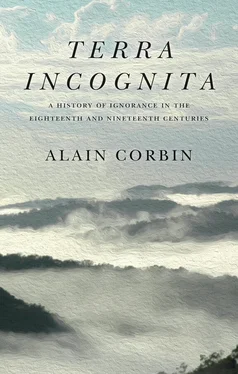

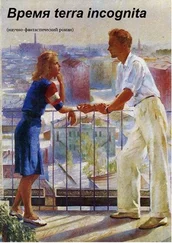
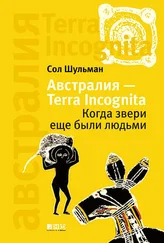

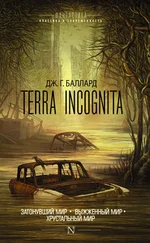
![Сергей Спящий - Время terra incognita [СИ]](/books/395082/sergej-spyachij-vremya-terra-incognita-si-thumb.webp)

